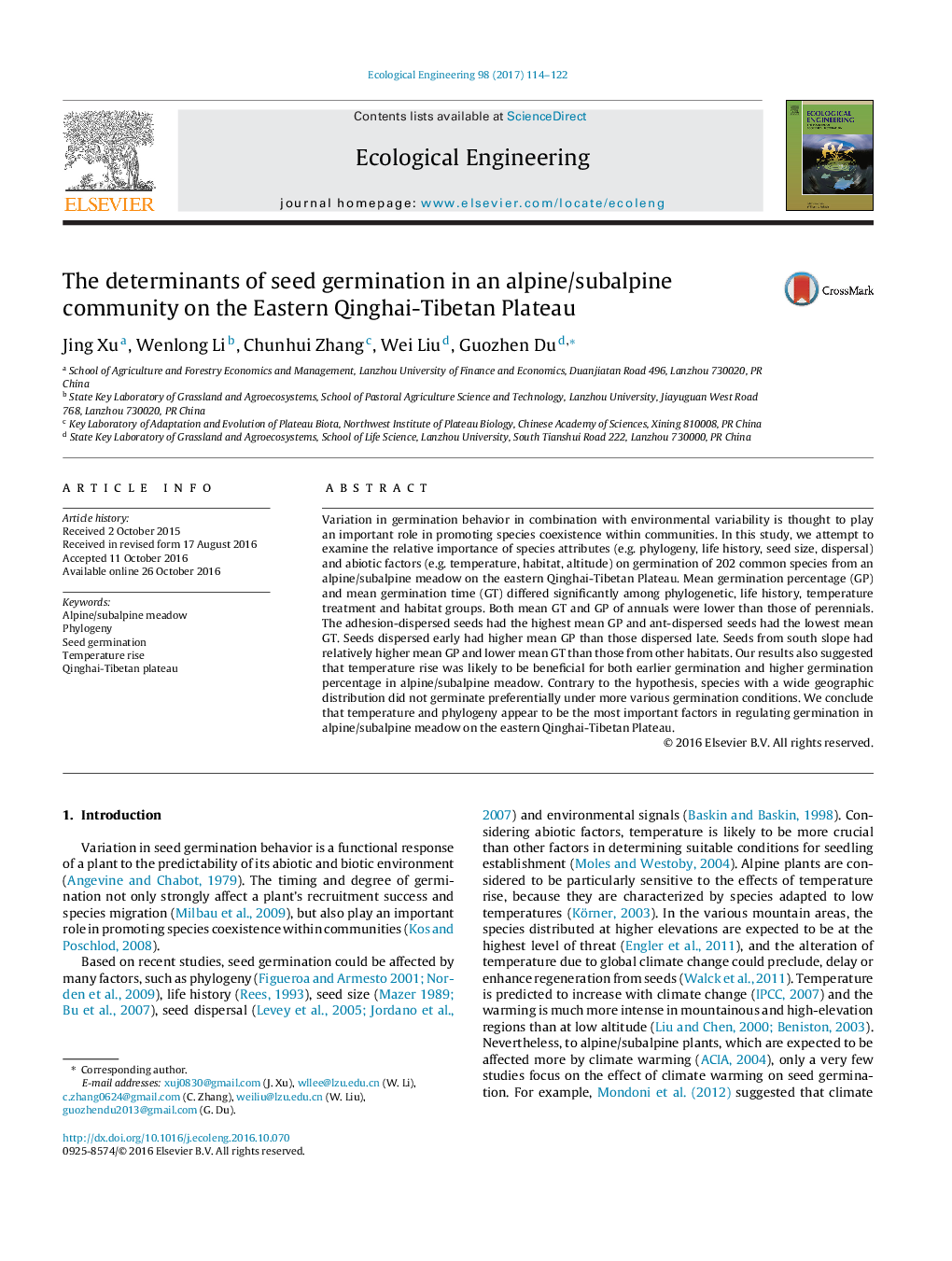| Article ID | Journal | Published Year | Pages | File Type |
|---|---|---|---|---|
| 5744061 | Ecological Engineering | 2017 | 9 Pages |
Variation in germination behavior in combination with environmental variability is thought to play an important role in promoting species coexistence within communities. In this study, we attempt to examine the relative importance of species attributes (e.g. phylogeny, life history, seed size, dispersal) and abiotic factors (e.g. temperature, habitat, altitude) on germination of 202 common species from an alpine/subalpine meadow on the eastern Qinghai-Tibetan Plateau. Mean germination percentage (GP) and mean germination time (GT) differed significantly among phylogenetic, life history, temperature treatment and habitat groups. Both mean GT and GP of annuals were lower than those of perennials. The adhesion-dispersed seeds had the highest mean GP and ant-dispersed seeds had the lowest mean GT. Seeds dispersed early had higher mean GP than those dispersed late. Seeds from south slope had relatively higher mean GP and lower mean GT than those from other habitats. Our results also suggested that temperature rise was likely to be beneficial for both earlier germination and higher germination percentage in alpine/subalpine meadow. Contrary to the hypothesis, species with a wide geographic distribution did not germinate preferentially under more various germination conditions. We conclude that temperature and phylogeny appear to be the most important factors in regulating germination in alpine/subalpine meadow on the eastern Qinghai-Tibetan Plateau.
